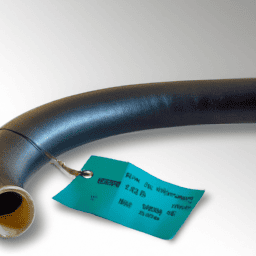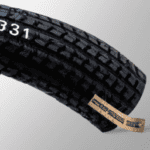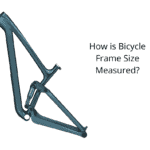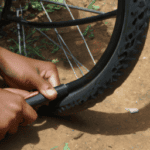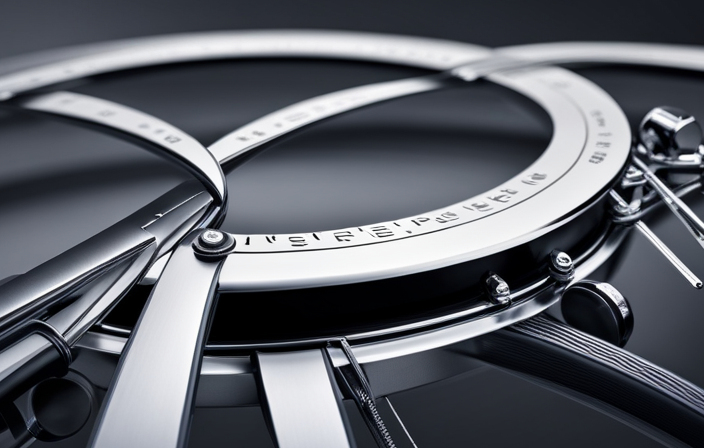Are you familiar with the price of a bike tube? For dedicated bike riders, the fluctuating costs of these vital parts might already be known. But if you’re either new to biking or have never needed to swap out a tube, you could be curious about the current price range. Knowing how much bicycle tubes cost can aid you in making wise choices when buying new ones, potentially leading to cost savings over time.
When it comes to the cost of bicycle tubes, there are several factors that can influence the price. The size of the tube, the type of valve, and the material it is made from are all important considerations. Additionally, brand name can also play a role in the cost of a tube.
By understanding these factors, you can better compare prices and find the best tube for your needs and budget. In this article, we’ll explore the average prices of bicycle tubes, how to choose the right one, and tips for saving money on your next purchase.
Key Takeaways
- The cost of a bicycle tube is influenced by factors such as brand, size, valve type, material quality, regional pricing, and availability, with an average price range of $8-$12.
- Popular brands like Continental or Schwalbe may cost more but offer higher quality materials and construction, while thorn-resistant or self-sealing tubes cost more as well.
- There are different types of bicycle tubes available, including standard butyl rubber tubes, latex tubes, and foam tubes, each with its own benefits and drawbacks.
- It is essential to select the right bicycle tube based on the bike’s size, tire width, and valve type, and to regularly check and replace tubes to ensure safety and longevity of the bike’s performance. Buying in bulk, shopping for discounts, and investing in high-quality products that fit the bike’s specifications can also save money.
Factors That Influence the Cost of a Bicycle Tube
You’ll notice that factors like brand, size, and material can all affect how much you’ll be shelling out for a bike tube. Brand reputation plays a significant role in the cost of a bicycle tube. Top brands with a reputation for quality often charge a premium for their products. However, you can expect to get superior quality and performance from these tubes, making the extra cost worth it in the long run.
Material quality is another essential factor to consider when purchasing a bicycle tube. High-quality materials like Kevlar and butyl provide excellent durability and puncture resistance, which means they last longer and require fewer replacements. Besides, regional pricing and availability also play a role in the cost of a bike tube.
In some regions, the cost of a bike tube may be higher due to transportation costs or import taxes. Similarly, the availability of certain brands or sizes may affect the price of a tube.
In the next section, we’ll take a look at the average prices of bicycle tubes and how they vary based on factors like brand, size, and quality.
Average Prices of Bicycle Tubes
If you’re looking to replace the rubber donut on your trusty two-wheeler, you can expect to pay around $8-$12 for a new one. However, keep in mind that the price may vary depending on the brand and type of tube you choose.
Some popular brands like Continental or Schwalbe may cost a bit more than generic brands, but they also offer higher quality materials and construction that can lead to a longer lifespan for your bicycle tube.
When it comes to types available, there are a few options to consider. The most common type is the standard butyl rubber tube, which is affordable and durable for most riding conditions.
For those who need extra puncture protection, there are also options like thorn-resistant or self-sealing tubes, which can cost a bit more but offer added peace of mind on rough terrain or in urban environments.
Overall, it’s important to consider your specific needs and budget when selecting a bicycle tube.
Transition: Now that you know about the average prices and types of bicycle tubes available, let’s move on to how to choose the right one for your bike.
How to Choose the Right Bicycle Tube
To select the proper rubber donut for your ride, it’s essential to consider your bike’s size and tire width. Bicycle tubes vary in size and material, so it’s crucial to know what you’re looking for.
There are different tube materials to choose from, such as butyl, latex, and foam. Butyl is the most common material for bicycle tubes due to its durability and affordability. Latex tubes are lighter and more flexible, but they’re more expensive and require more maintenance. Foam tubes, on the other hand, are the least common and are only suitable for specific types of bicycles.
When it comes to sizing options for bicycle tubes, there are several measurements to consider, such as the diameter and width of the tire. You can find the correct size of the tube printed on the sidewall of your tire. Make sure to match the size of the tube with your tire to avoid any problems with fitting.
Additionally, you should also consider the valve type of the tube. There are two common types of valves: Schrader and Presta. Schrader valves are more common and are similar to the valves found on car tires. Presta valves are thinner and require a special pump head. Knowing these details will help you choose the right bicycle tube for your ride.
When it comes to saving money on bicycle tubes, there are a few tips to keep in mind. One of the easiest ways to save money is by buying in bulk. Many online retailers offer discounts for purchasing multiple tubes at once. You can also look for deals and promotions at your local bike shop or online. Another way to save money is by purchasing cheaper, but still reliable, tube brands. However, make sure to read reviews and do your research before buying an unknown brand.
Finally, taking good care of your bicycle tubes will help prolong their lifespan and save you money in the long run.
Tips for Saving Money on Bicycle Tubes
If you want to save money on bicycle tubes, there are a few key tips to keep in mind. First, consider buying in bulk. This can help you get a lower per-tube price and ensure that you always have a spare tube on hand.
Additionally, keep an eye out for sales and discounts at your local bike shop or online retailers. By being savvy about your purchasing habits, you can keep your bike running smoothly without breaking the bank.
Buying in Bulk
You’ll get the best bang for your buck by purchasing bicycle tubes in bulk—it’s like killing two birds with one stone. Not only will you save money, but you’ll also have extra tubes on hand in case of emergencies.
Here are some benefits of buying bicycle tubes in bulk:
-
Bulk discounts: Many retailers offer bulk discounts for purchasing multiple tubes at once. This can save you a significant amount of money in the long run.
-
Wholesale pricing: Some distributors offer wholesale pricing for large orders, which can be a great option for bike shops or individuals looking to resell tubes.
-
Convenience: By purchasing multiple tubes at once, you won’t have to worry about running out of tubes for a while. This can be especially helpful for avid cyclists who go through tubes quickly.
-
Peace of mind: Having extra tubes on hand can give you peace of mind, knowing that you won’t be stranded on a ride due to a flat tire.
Buying bicycle tubes in bulk is a smart way to save money and ensure that you always have extra tubes on hand. However, it’s also important to shop sales and discounts to get the best deals possible.
Shopping Sales and Discounts
When shopping for discounts, keep an eye out for sales and promotions that can help you save money on your cycling needs. Many bicycle tube brands offer occasional discounts, especially during the off-season or major holidays. You can also find bicycle tubes on sale at local bike shops, sporting goods stores, and online retailers. Be sure to compare prices and check for any possible shipping fees or additional charges before making a purchase.
It’s important to invest in a high-quality product that fits your bike’s specifications when purchasing bicycle tubes. However, even the best bicycle tubes can wear out over time due to factors such as punctures, wear and tear, and exposure to the elements.
In the next section, we’ll discuss the importance of regularly checking and replacing your bicycle tubes to ensure a safe and enjoyable cycling experience.
Importance of Regularly Checking and Replacing Bicycle Tubes
Regularly checking and replacing your bicycle tubes is important for both your safety and the longevity of your bike’s performance. One of the most important reasons to check your bicycle tubes is to ensure the proper tire pressure.
Riding on underinflated tires can not only damage your tubes but also affect your bike’s handling and stability, making it more difficult to control. Overinflated tires, on the other hand, can lead to a more uncomfortable ride and increased risk of punctures.
Another reason to check your bicycle tubes regularly is to inspect for signs of damage. Small punctures or tears can quickly grow into larger ones, leading to a flat tire or even a blowout. You may also notice bulges or cracks in the tube, which are signs of internal damage and require immediate replacement.
By regularly inspecting and replacing your bicycle tubes, you can ensure a safer and more enjoyable ride, and avoid costly repairs down the road. Remember, taking a few extra minutes to check your tubes can save you time, money, and potentially prevent a dangerous situation on the road.
Frequently Asked Questions
How do I know when it’s time to replace my bicycle tube?
You can tell it’s time to replace your bicycle tube when you notice signs of wear such as punctures or bulges. The frequency of tube replacement varies based on usage and terrain. Regularly check your tires for signs of wear to avoid unexpected flats.
Can I repair a punctured bicycle tube instead of replacing it?
You can repair a punctured bicycle tube with a DIY patching kit. The process involves locating the puncture, cleaning the area, applying glue, and attaching the patch. However, if the puncture is too large or the tube is worn out, replacement is recommended.
What’s the difference between a standard bicycle tube and a high-performance one?
Oh, you’d like to know the difference between a standard bicycle tube and a high-performance one? Well, the latter boasts superior tube durability and inflation capacity. But don’t worry about the cost, it’s just a bike tube after all.
Are there any eco-friendly or sustainable options for bicycle tubes?
Looking for eco-friendly alternatives for bicycle tubes? Sustainable options include tubes made from recycled materials or natural rubber. These options can reduce waste and decrease the carbon footprint of cycling.
Can I use a bicycle tube that’s a different size than what my bike requires?
Did you know that using a bicycle tube that’s a different size than what your bike requires can lead to safety hazards? Bicycle tube compatibility is crucial for safe riding. Consider alternative options, such as patching or purchasing the correct size tube.
Conclusion
Congratulations! You’re now equipped with the knowledge of how much a bicycle tube costs and the factors that affect its price. As an avid cyclist, it’s essential to understand the importance of maintaining your bike’s tires and replacing worn-out tubes.
In conclusion, remember that the cost of a bicycle tube varies based on several factors such as the size, material, and brand. However, investing in a high-quality tube will save you money in the long run by preventing unnecessary punctures and blowouts.
So ensure that you choose the right tube size, material, and valve type, and always check for wear and tear on your tubes before embarking on your next cycling adventure. As the saying goes, "an ounce of prevention is worth a pound of cure."
